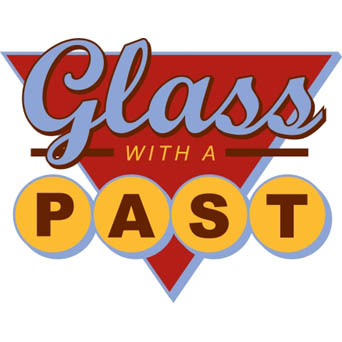Q & A Mondays are answers to reader questions submitted via email or social media. All personal information has been removed for privacy reasons and messages have been edited for clarity. You may submit your own questions through the About/Contact page.
Q: Good morning. I took your class online and enjoyed it very much. I had a question about using Corelle plates. The material is tempered glass. But I’m concerned it may be toxic. Thank you for sharing your knowledge and your creativity.
A: Thank you for taking the class, I hope it was very helpful for you. I’m always available for questions too, so just let me know anytime I can help. Now, tempering glass is a heat treatment that makes the glass tougher and break resistant. Corelle is slightly different in that it uses three layers of glass fused together, the center layer is a slightly different CoE, so it creates tension between the layers, making the glass tougher and break resistant. In my experience, it also requires much higher temperatures to fuse, in fact, much higher than my glass kiln will actually go to. As to the toxic question, I’m not quite sure which part of Corelle concerns you, the tempering or maybe the enamels in the design? Since the enamels are high temperature and food safe to start with, nothing you do to the in a kiln will change that, same with the glass.
Q: so I made a “Chewey” and I have a question for you. can I use the ground up frit powder to create a new piece of glass? and if so how do I do this. like use a drop glass firing order or something?
A: You can use the frit to make a new piece of glass, but it is probably not going to be quite what you are thinking. Here is a link to an article where I show the process, and the end result. The finished pieces don’t look like sheet glass, they are more like pate de verre.
https://glasswithapast.com/knowledgebase/cast-bottle-glass-frit-panels/
Q: Hi Jodi, greetings from Australia! I just love your work and have purchased a couple of your Curious Mondo workshops on fused glass and screen printing – staying up to watch in the early hours here in Aus became hard for three consecutive nights, lol. I’m hoping you can assist me with any information you might have about an “opaline” platter which I acquired from my Mum. It’s about 1940’s and I’m unsure if it’s English or Australian. It has a crack right through the middle and I wonder if it can be flattened in the kiln and re-slumped into a mold. Or, if unable to do it as a whole piece I could break or saw it up into pendant sizes (for nieces and great-nieces), therefore full fuse or contour fuse. Before I do anything with it and because it has a lovely decorative back I intend to made a mold of it for slumping. I know I’m probably pushing the envelope but if anyone might know anything about it, it would be you. Thanks heaps for reading this and for sharing so much knowledge. Cheers
A: I’m sorry for the very late response on this, I wanted to try a few things with some opaline glass I had before I replied. I’m not as impressed with the fused results with opaline, it tends to devit. What I do like though, is to cut the textured pieces (like the back of your platter), paint it with mica and fire polish it at about 1285-1300F. It keeps the texture and I think is quite lovely! It’s lovely without mica too, in case you want to keep things simple.

